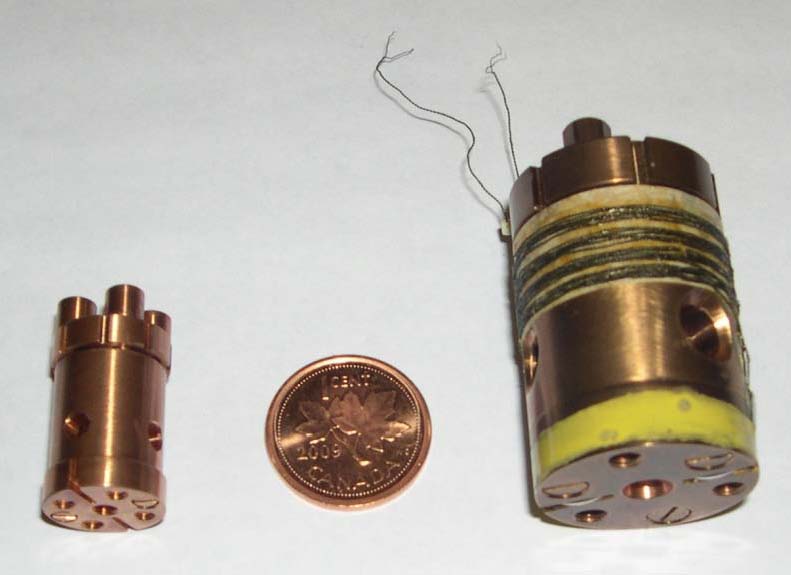High Pressure Laboratory
High Pressure Lab
Group members: Di Tian, Dan Sun
We use high pressures to modify the properties of materials in a highly controlled way. By changing the lattice parameter of a solid we can gradually modify the electron wave-functions (normally increasing the hopping integrals). These measurements are motivated by two related goals: firstly to try to understand interesting states that have previously been discovered at ambient pressure, and secondly to search for interesting states (such as superconductivity) by 'tuning' the properties of a given material, for example across a metal-insulator transition, or a magnetic-non-magnetic phase boundary.

In the first category is our work on the bilayer ruthenate Sr3Ru2O7, which shows a novel nematic state near its metamagnetic transition (Grigera 2004). Our goals are to induce this nematic state by tuning with pressure (Wu 2010, Physical Review B, 2011), and to modify the phase diagram of the known nematic state with pressure. We are also using pressure to understand the cross-over from incoherent to coherent transport in metals that are close to a Mott transition, such as FeCrAs and some frustrated spin systems, in collaboration with researchers at ISSP Tokyo.
This second application (searching for interesting new states) is a bit like poor-man's materials science: in contrast to the traditional condensed-matter approach of using chemistry to make new materials with interesting and useful new properties, we try to use pressure to discover interesting and useful properties in existing materials. In previous work we have used this approach to discover new superconducting states at very low temperatures, on the border of magnetic order (eg Julian 1996, Mathur 1998), but now we are looking for new physics associated with metal-insulator transitions in oxides, which requires much higher pressures.
Using moissanite (single crystal silicon-carbide) and diamond anvil cells (pictured above), we have so-far measured resistivity at pressures of up to 17 GPa (170 kbar). This is sufficient to significantly modify the properties of many materials, and to induce metal-insulator transitions in some oxides with many-body insulating states.
References:
Grigera 2006: S.A. Grigera, P. Gegenwart, R.A. Borzi, F. Weickert, A.J. Schofield, R.S. Perry, T. Tayama, T. Sakakibara, Y. Maeno, A.G. Green and A.P. Mackenzie, Science 206 (2004) 1154.
Julian 1996: S.R. Julian, C. Pfleiderer, F.M. Grosche, N.D. Mathur, G.J. McMullan, A.J. Diver, I.R. Walker and G.G. Lonzarich, J. Phys.-Cond. Mat. 8 (1996) 9675.
Mathur 1998: N.D. Mathur, F.M. Grosche, S.R. Julian, I.R. Walker, D.M. Freye, R.K.W. Haselwimmer and G.G. Lonzarich, Nature 394 (1998) 39.
Wu 2011: W. Wu, A..McCollam, S.A. Grigera, R.S. Perry, A.P. Mackenzie, and S.R. Julian, Quantum critical metamagnetism of Sr3Ru2O7 under hydrostatic pressure, Phys. Rev. B 83 (2011) 045106.


